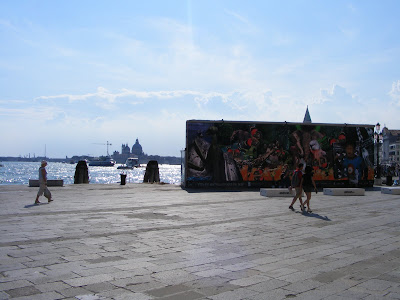The year has ended with a confessional of denouncers of video-art; Charles Saatchi dismissed it in his attack on the art world, and Waldemar Januszczak added 'please no more video art' to his Christmas wishlist, using Dean's giant film as the most irksome example of all.
And yet for me Dean's film is a beautiful tribute to a passion for her medium. Pure visual luxury. A poetry of light. A series of hypnotic images spliced together, saturating and shifting through filters. Uniquely accessible above all, not elaborately conceptualised or filled with the cold intellectualism which makes video art only briefly bearable. There is only a soft murmur above the film's visual soundtrack and tones of silence. The delicious hush of a captive audience.

In the Turbine Hall, dark except for the warm, drowsy luxuriance of Dean's video, there is something of the cinema. People sit on the floor in perfect silhouettes. Children totter up to the screen only to be shooed away again. The best manifestations of the Turbine commission are about interaction, have the power to transform the vacuous space into theatre and theme park.
It has the melancholy of obituary about it; Dean is painfully aware that her medium is dying even as she celebrates its richest qualities. Yet there is a joyous buoyance too; growth and regeneration, giant balls float gently in the Turbine Hall. The Turbine Hall projected onto the Turbine Hall, seems like a generous thank you to the commission itself.

Waldemar ends his Christmas wish list by requesting that at least, there will be a time limit imposed upon video art of 2 minutes maximum. But I sit on the cold floor letting Dean's visual poetry wash over me like the cascades of the waterfall in the film. I could give all my time to its entrancing assault on my senses. For me Dean's films is one of those legendary Turbine commissions, like Ai Weiwei's sunflower seeds or Carsten Holler's slide, that I will always be able to say that I saw. It is a lyrical affirmation of the importance of video art in a year of dissent.
















































